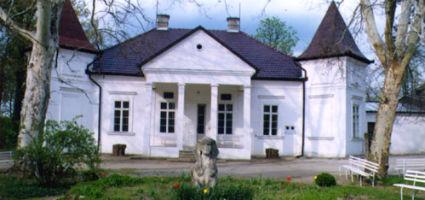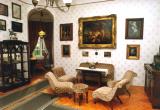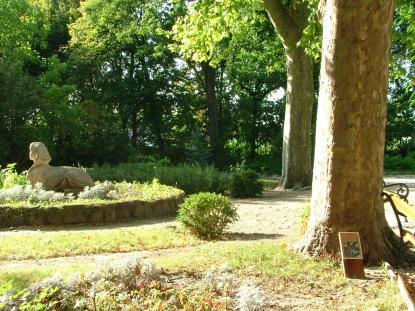2025. July 2. Wednesday
Blaskovich Mansion Museum - Tápiószele
 |
Address: 2766, Tápiószele Múzeum út 13.
Phone number: (53) 380-157
E-mail: blaskovichmuzeum@gmail.com
Opening hours: 28.02-14.11.: Tue-Sun 9-17
15.11-31.01.: Tue-Fri 10-16 |
The BLASKOVICH MUSEUM in Tápiószele is the only mansion museum of the country, which survived harmlessly - even in its furniture - the vicissitudes of the World War II. The history of the museum of Tápiószele started on two threads.
The grandfather, Gyula Blaskovich (1806-1850) bought paintings and etchings from the estate of János Pyrker, an archbishop of Eger. His son, Gyula Blaskovich (1843-1911 ) was the first to put some valuable items of the private collection on public show (Nagybánya 1889, Budapest 1896.
So one of the threads was the archeological activity of György Blaskovich, and the other was the activity of the grandsons, marked by the Scythian princely shield ornament: the gold deer found at Tápiószentmárton in 1923, as well as by the excavation of the Scythian burial place (1938-53) in Tápiószele.
After moving to Tápiószele (1912), the Blaskovich brothers continued enriching the inherited material, from which they established a state museum in 1952.
The grandfather, Gyula Blaskovich (1806-1850) bought paintings and etchings from the estate of János Pyrker, an archbishop of Eger. His son, Gyula Blaskovich (1843-1911 ) was the first to put some valuable items of the private collection on public show (Nagybánya 1889, Budapest 1896.
So one of the threads was the archeological activity of György Blaskovich, and the other was the activity of the grandsons, marked by the Scythian princely shield ornament: the gold deer found at Tápiószentmárton in 1923, as well as by the excavation of the Scythian burial place (1938-53) in Tápiószele.
After moving to Tápiószele (1912), the Blaskovich brothers continued enriching the inherited material, from which they established a state museum in 1952.

